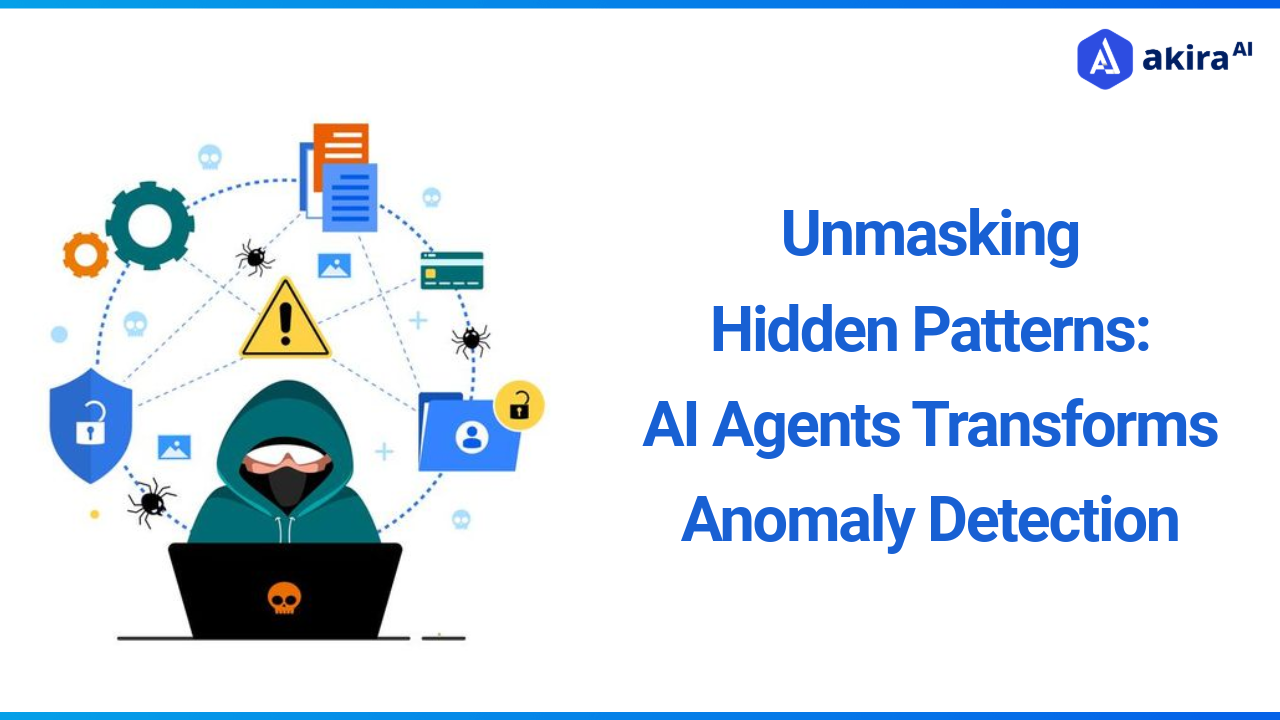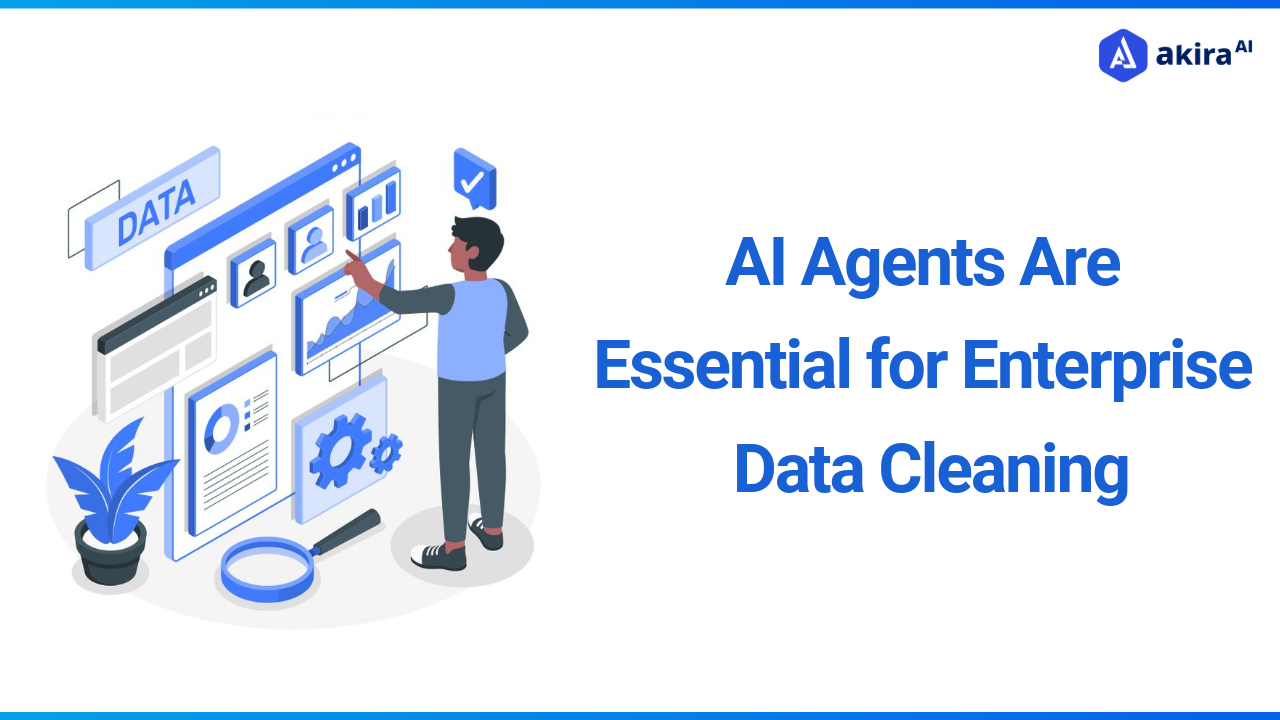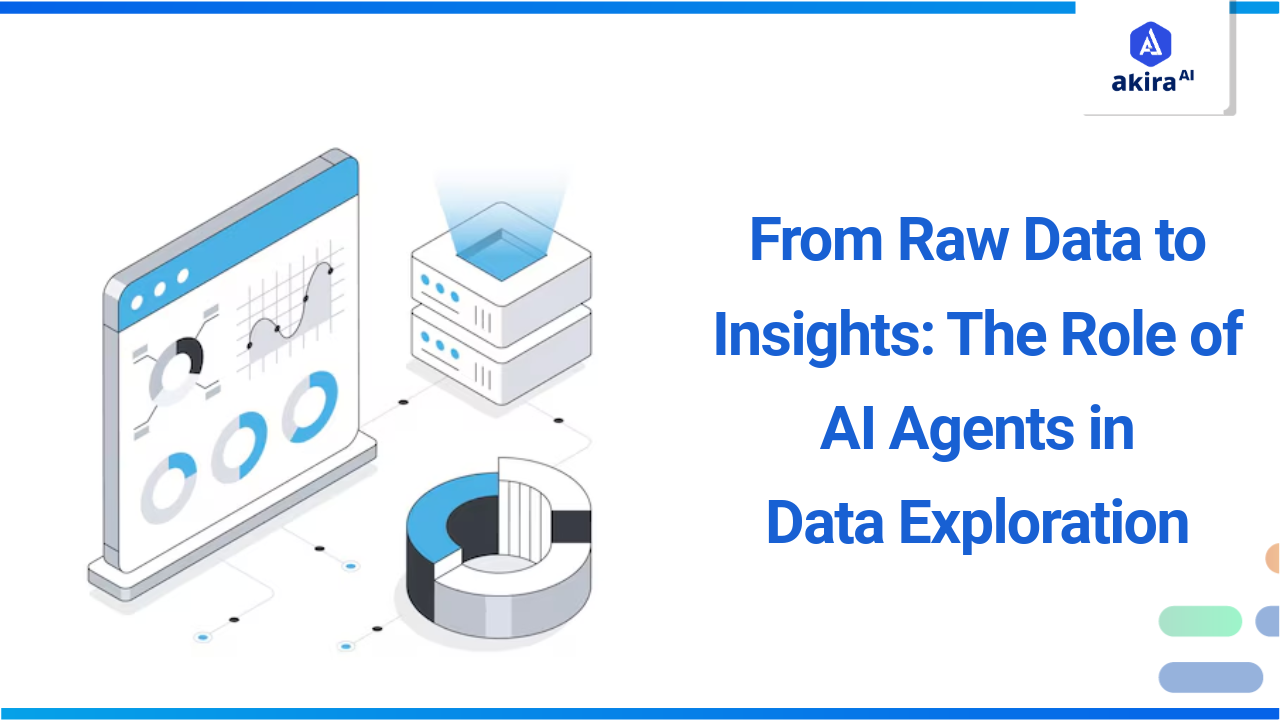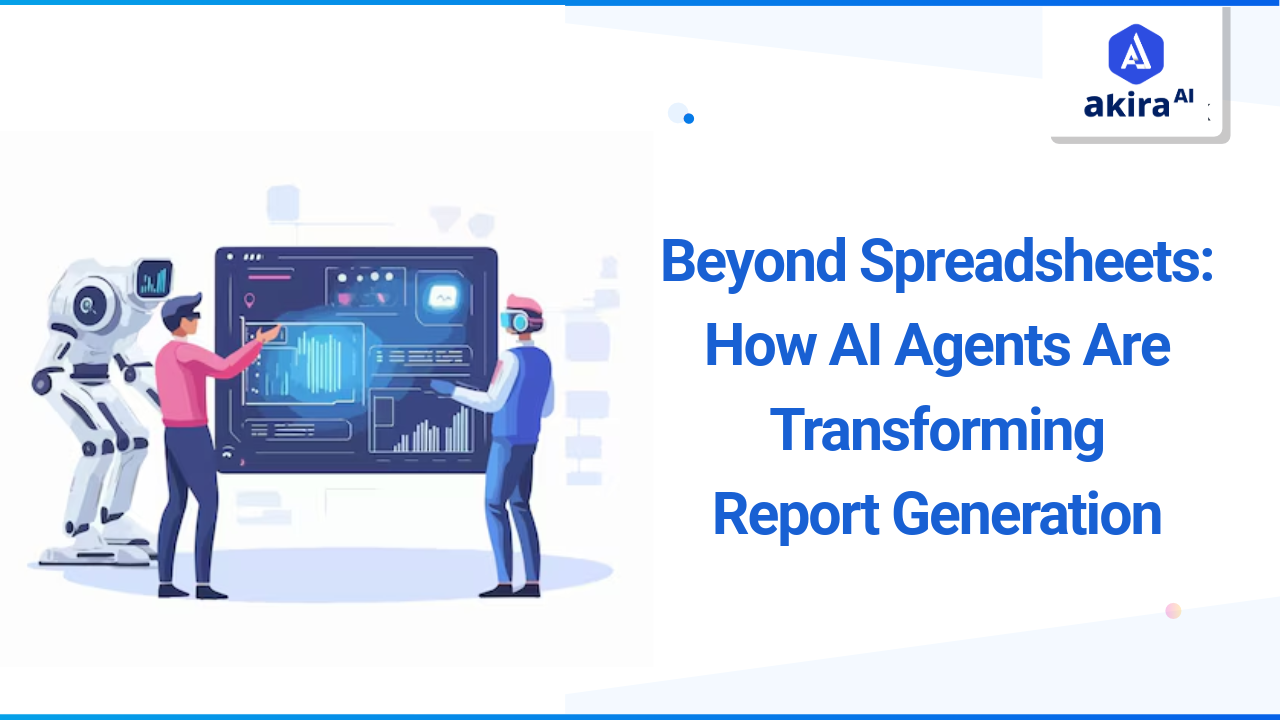Key Insights
-
Advanced Detection Accuracy: Agentic AI anomaly detection adapts to evolving patterns, reducing false positives and missed anomalies.
-
Real-Time Monitoring: Continuous analysis of data streams enables instant anomaly detection and faster response times.
-
Scalability & Efficiency: AI-driven solutions handle large datasets efficiently, making anomaly detection more effective across industries.

A leading fintech company faced an unexpected crisis—undetected transaction anomalies were causing massive revenue losses. Despite using traditional fraud detection systems, sophisticated fraudsters found ways to bypass rigid rule-based models. Customer complaints surged, and regulatory scrutiny intensified.
To counter this, the company deployed AI agents for real-time anomaly detection. These agents analyzed millions of transactions, identifying hidden fraud patterns that humans and static systems missed. This case highlights how Agentic AI-driven anomaly detection is no longer a luxury but a necessity. This blog explores how AI agents are revolutionizing anomaly detection.
What is Anomaly Detection?
Anomaly detection is identifying patterns in data that do not conform to expected behaviour. These patterns, called anomalies or outliers, can indicate critical events such as fraud, system failures, cyberattacks, or errors in data processing.
Types of Anomalies
-
Point Anomalies occur when a single data point deviates significantly from the rest (e.g., a sudden spike in network traffic).
-
Contextual Anomalies: A data point is only abnormal in a specific context (e.g., high spending on Black Friday occurs every day but not on a regular day).
-
Collective Anomalies: A group of data points behaves abnormally together, even if individual points do not (e.g., a sudden drop in stock prices across multiple companies).
For example, a network monitoring system may notice a sudden spike in data transfers from a company server at midnight. Since this is unusual behaviour, it may indicate a cyberattack or data breach.
Key Concepts of Anomaly Detection
Data Quality & Preprocessing: Raw data often contains noise, missing values, or inconsistencies. Proper data cleaning, normalization, and transformation ensure accurate anomaly detection and reduce false alarms.
Feature Engineering & Selection: Identifying relevant attributes in data improves anomaly detection accuracy. Effective feature selection eliminates irrelevant variables, enhancing model performance and reducing computational costs.
Time-Series Anomaly Detection: Many datasets, such as financial transactions or sensor readings, are time-dependent. Detecting anomalies in time-series data requires trend analysis, seasonality adjustments, and forecasting techniques.
Data Aggregation & Dimensionality Reduction: Large datasets can be complex and high-dimensional. Techniques like PCA (Principal Component Analysis) or t-SNE (t-distributed Stochastic Neighbor Embedding) help visualize and detect anomalies in reduced dimensions.
Scalability & Big Data Management: Anomaly detection must handle vast amounts of structured and unstructured data. Scalable frameworks like Apache Spark and distributed databases help process large datasets efficiently
Traditional Way of Anomaly Detection
In the past, anomaly detection relied heavily on traditional statistical methods and rule-based systems. Though adequate, these approaches have limitations, especially as data complexity and volume increase. Here's how it typically worked:
-
Statistical Analysis: Uses mathematical models to identify anomalies based on deviations from expected distributions. Methods like mean, standard deviation, and interquartile range (IQR) help detect outliers in numerical data.
-
Threshold-Based Rules: These rules set predefined limits, and any data point exceeding these thresholds is considered an anomaly. This method is commonly used in monitoring systems, such as setting maximum temperature limits for sensors.
-
Clustering-Based Detection: This method groups data into clusters based on similarity, identifying points that do not belong to any cluster as anomalies. It is useful in customer segmentation, where an unusual spending pattern may indicate fraud.
-
Distance-Based Methods: Measures the distance between data points, with those far from the majority flagged as anomalies. For instance, in network traffic analysis, an unusually high number of requests from a single IP address may indicate a cyberattack.
-
Time-series analysis: Detects anomalies by monitoring trends, seasonality, and sudden deviations in time-based data. Examples include detecting fraudulent banking transactions or identifying irregular electricity usage patterns.
Impact on Customers Due to Traditional Methods of Anomaly Detection
The traditional ways of anomaly detection have been limiting for both businesses and their customers in the following ways:
-
False Positives: Customers may face unnecessary disruptions when normal activities are incorrectly flagged as anomalies. For example, a legitimate credit card transaction in a foreign country might be blocked, causing inconvenience.
-
False Negatives: Some anomalies may go undetected, leading to potential security risks. For instance, fraudulent transactions deviating slightly from normal behaviour might not trigger alerts, resulting in customer financial losses.
-
Delayed Detection: Traditional methods often rely on predefined rules and thresholds, making them slower in detecting new or evolving threats. This delay can affect customers, allowing issues like fraud or service disruptions to persist longer.
-
Lack of Adaptability: These methods struggle with dynamic customer behaviour, leading to ineffective detection. For example, seasonal shopping trends or evolving cybersecurity threats may not be accurately identified, affecting customer experience.
-
Inflexible Customer Experience: Rigid rules can create unnecessary restrictions, such as sudden account lockouts or access denials. This can frustrate customers, reduce trust in the service, and impact overall satisfaction.
Akira AI: Multi-Agent in Action
An effective AI-powered anomaly detection system can be implemented at different levels, such as the following:
-
Data Collection & Aggregation (Data Ingestion Agent): The Data Ingestion Agent gathers data from sources like databases, IoT sensors, and logs, ensuring a structured dataset for analysis. It collects, filters, and formats incoming data before passing it to the next stage.
-
Real-Time & Historical Monitoring Agent: The Real-time Monitoring Agent continuously scans live data streams to detect immediate anomalies. At the same time, the Historical Data Agent analyzes past trends to improve detection accuracy. This combination helps differentiate between normal fluctuations and true anomalies.
-
Data Preparation & Feature Extraction Agent: The Data Preprocessing Agent cleans, normalizes, and removes noise from the data, ensuring high-quality inputs. The Feature Engineering Agent extracts meaningful characteristics from the data to improve the performance of anomaly detection models.
-
Anomaly Identification & Decision-Making Agent: The Anomaly Detection Agent applies detection algorithms to identify unusual patterns in data. The Reporting Agent generates reports on detected anomalies, the Alerting Agent notifies stakeholders of critical anomalies, and the Visualization Agent presents anomalies through dashboards and charts for easier understanding.
-
Orchestration & Final Output (Master Orchestrator Agent & Final Outputs) – The Master Orchestrator Agent synchronizes all agents to ensure smooth workflow and accurate anomaly detection. The Final Outputs include reports, alerts, and dashboards, enabling businesses to make data-driven decisions and take corrective actions.
Prominent Technologies in the Space of Anomaly Detection
Over the years, several technologies have emerged to aid anomaly detection. These include:
-
Machine Learning and AI: Techniques like supervised, unsupervised, and deep learning models (e.g., decision trees, clustering, and neural networks) help detect complex anomalies by learning patterns from data and adapting to new behaviours.
-
Statistical Methods: Traditional approaches such as Z-score, interquartile range (IQR), and probability distributions identify outliers by measuring deviations from expected data patterns, making them practical for structured datasets.
-
Big Data & Cloud Computing: Platforms like Apache Spark, Hadoop, and cloud services (AWS, Google Cloud, Azure) enable large-scale anomaly detection by processing vast amounts of data efficiently, supporting both real-time and batch analysis.
-
Streaming Analytics & IoT: Tools like Apache Kafka, Flink, and MQTT process continuous data streams, helping detect anomalies in IoT sensor data, industrial monitoring, and predictive maintenance applications.
-
Graph Analytics & Network Analysis: Graph-based methods analyze relationships between data points, which is helpful in fraud detection, cybersecurity threat detection, and social network analysis by identifying unusual interactions and link structures.
How AI Agents Supersede Traditional Technologies
AI agents, particularly those built for anomaly detection, offer several advantages over traditional methods. Here's how:
-
Dynamic Learning vs. Fixed Rules: Traditional methods rely on predefined thresholds and static rules, making them ineffective against evolving anomalies. AI agents continuously learn from new data, adapting to changing patterns without manual adjustments.
-
Improved Accuracy & Reduced False Alarms: Rule-based systems often generate excessive false positives or miss subtle anomalies. AI models analyze complex relationships in data, improving detection accuracy and minimizing incorrect alerts.
-
Real-Time Detection & Faster Response: Traditional approaches may require batch processing, leading to delays in anomaly detection. AI-powered solutions analyze data streams in real-time, enabling instant threat detection and rapid response.
-
Scalability for Big Data: As data volume and complexity grow, traditional methods struggle with performance. AI-driven anomaly detection efficiently processes massive datasets, identifying structured and unstructured data irregularities.
-
Automation & Continuous Improvement: Traditional systems need frequent manual updates to remain effective. AI agents automate anomaly detection, continuously improving their models to detect previously unseen anomalies.
Successful Implementations of AI Agents in Anomaly Detection
-
Fraud Detection in Banking (JPMorgan Chase): JPMorgan Chase detects fraudulent transactions by analyzing customer spending behaviour. If an unusual purchase pattern is detected, such as a sudden high-value transaction in a foreign country, the system flags it for further verification, reducing financial fraud.
-
Industrial Equipment Monitoring (Siemens): Siemens prevents equipment failures by continuously analyzing sensor data from machinery. Unexpected temperature spikes, pressure variations, or vibration anomalies trigger maintenance alerts, allowing proactive repairs and minimizing downtime.
-
Cybersecurity Threat Detection (Darktrace): Darktrace enhances cybersecurity by identifying unusual network activity. If an unauthorized access attempt or data transfer pattern deviates from normal behaviour, the system isolates the threat, preventing potential cyberattacks.
-
Healthcare Anomaly Detection (IBM Watson Health): IBM Watson Health assists in medical imaging analysis by identifying irregularities in MRI and CT scans. If an abnormal tissue growth or unexpected pattern is detected, it helps radiologists diagnose diseases earlier and more accurately.
-
Retail & E-commerce (Amazon): Amazon ensures secure transactions by monitoring shopping behaviours. If a user’s purchase activity significantly deviates from their usual pattern, such as bulk orders of high-value items, it may be flagged to prevent fraud or unauthorized purchases.
Business Benefits of AI Agents for Anomaly Detection
Cost Savings & Operational Efficiency (Up to 30% Reduction in Costs): Automating anomaly detection reduces manual monitoring and operational inefficiencies, cutting costs by 20-30%. Early detection of system failures prevents expensive corrective measures.
Revenue Protection & Fraud Prevention (Up to 40% Fraud Reduction): Advanced systems identify fraudulent activities in real-time, reducing financial losses by 30-40%. Businesses in banking, e-commerce, and insurance benefit from improved security and compliance.
Reduced Downtime & Increased Productivity (Up to 25% Higher Uptime): Detecting irregular patterns in system performance prevents unexpected breakdowns, improving uptime by 20-25%. This is crucial for manufacturing, logistics, and critical infrastructure.
Enhanced Customer Experience & Retention (Up to 35% Customer Satisfaction Improvement): Preventing disruptions in services and fraudulent activities results in a 25-35% increase in customer satisfaction. A seamless experience leads to higher customer loyalty.
Data-Driven Decision-Making & Competitive Advantage (Up to 50% Faster Decision-Making): Real-time insights enable quicker responses to potential risks, accelerating decision-making by 40-50%. Businesses gain a competitive edge through improved risk management and strategic planning.
Final Thoughts on Anomaly Detection
By identifying irregular patterns early, businesses can prevent fraud, reduce downtime, and improve decision-making. While effective in structured environments, traditional methods struggle to keep up with evolving threats and large-scale data. Modern approaches offer real-time insights, scalability, and automation, making them essential for organizations dealing with complex datasets.
Investing in advanced anomaly detection enhances operational efficiency and strengthens risk management and customer trust. Organisations prioritising proactive anomaly detection as data grows will gain a competitive edge, ensuring long-term sustainability and resilience against unforeseen disruptions.
Next Steps with AI Agents
Talk to our experts about implementing compound AI system, How Industries and different departments use Agentic Workflows and Decision Intelligence to Become Decision Centric. Utilizes AI to automate and optimize IT support and operations, improving efficiency and responsiveness.



